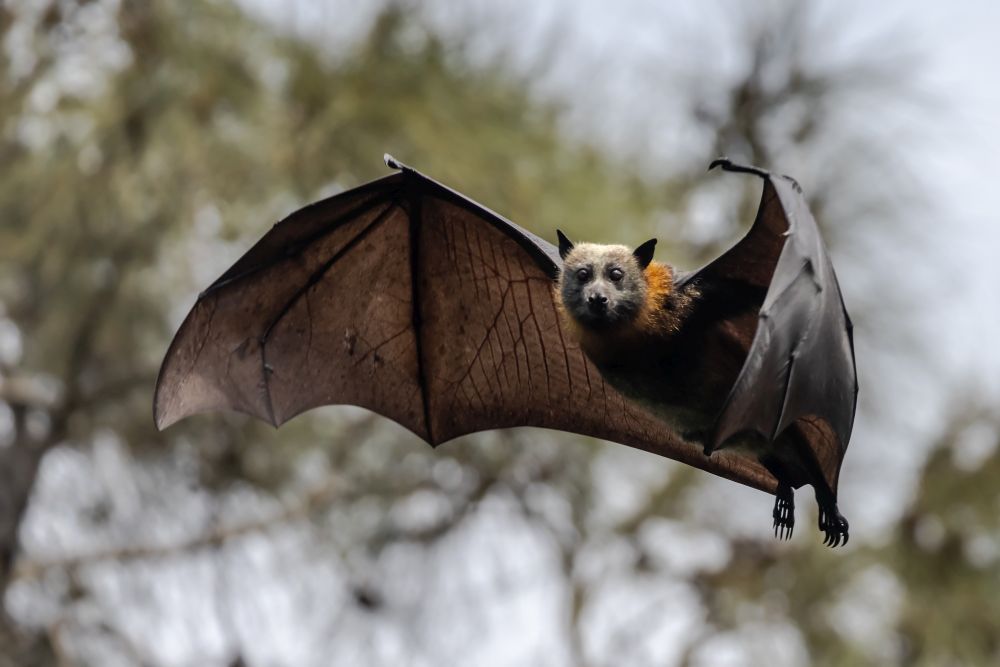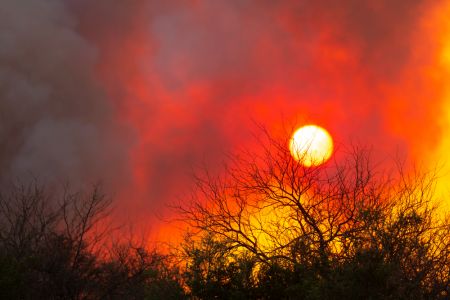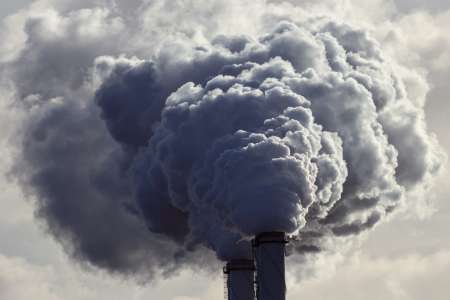Your Failing Health and Environmental Degration
The grave health impacts of global climate change, pollution, and biodiversity loss are a wakeup call. Meaningful changes can bring the degradation to a halt, safeguard your health, and those of your families. The changes are not easy to implement, but failure to take them means a certainty of failing, future health.
06/17/2024

The Serious Health Impacts and Costs of Climate Change, Pollution, and Species Decline
Climate change, pollution, and biodiversity loss are indisputably occurring, posing a severe threat to your health, your family’s health, and my health. As well as the health and survival of millions of species. No matter where you live on the planet the deeply interconnected environmental issues are increasing the burdens of sickness and disease in many ways.
They drive ever higher rates of respiratory illness, cancer, cardiovascular disease, neurological disorders, infectious diseases, malnutrition, and numerous other health problems. While also imposing massive economic costs on healthcare systems, individuals, communities, and nations. Economic costs, locally and worldwide, that each of us pays in some part, leaving little or less for purchases we would like to make, like vacations, clothes, food, and others.
Climate Change Is Increasing Your Risk of Getting Sick

iStock.com/Sorapop
Recent examples of extreme weather events resulting from global climate change are numerous and growing. These directly harm human health through phenomena like heat waves, floods, droughts, wildfires, and more. All of these cause injury, disease, and death. In 2023, hurricanes and tropical cyclones have increasingly made landfall with alarming frequency. Heat waves in India, Pakistan, China, Europe, and the United States have caused deaths, illnesses, and widespread disruption. Droughts have occurred in Africa, the Middle East, and the United States. Wildfires in Canada, the United States, and Europe have burned millions of acres, releasing pollutants that are respiratory killers for some. Heat stress can cause potentially fatal heat stroke and exhaustion, and worsen heart and kidney disease, as average temperatures rise globally and heat waves become more common and intense.
Hotter weather also promotes the spread of infectious diseases where established and in new areas as well. As the climate warms, mosquitoes can survive in previously uninhabitable, cooler regions. Diseases including malaria, dengue fever, Zika, and Lyme disease are expanding their ranges as this occurs, and it is expected to grow worse. Climate change is also altering and increasing the incidence of water-borne illnesses like cholera, typhoid, diarrheal illness, and giardiasis. These are not limited to developing countries, as recently they are increasingly seen in the developed world.
More extreme weather raises the risks of other climate impacts, too. Droughts jeopardize clean water supplies and food production, which can lead to malnutrition. Floods spread water-borne infections and contaminate drinking water. Wildfires release vast plumes of hazardous air pollutants like particulate matter, carbon monoxide, and volatile organic compounds causing spikes in respiratory and cardiovascular hospitalizations.
Indirect Effects Also Drive Illness

Air pollution is seen over Shanghai’s Puxi District buildings at dusk, China. iStock.com/FangXiaNuo
In addition to the direct effects of climate change itself, the greenhouse gas emissions driving it are also seriously degrading our health. Air pollution produced through burning fossil fuels for energy, transportation, and industry is blamed for around 9 million premature deaths in 2015. This makes it the single biggest environmental health risk worldwide.
Common pollutants like sulfur dioxide, nitrogen oxides, volatile organic compounds, and particulate matter when released then penetrate deep into the lungs. This triggers and worsens conditions like asthma, emphysema, bronchitis, and lung cancer. Air pollution also increases the risk of strokes, heart attacks, and neurological disorders like dementia.
Water pollution from industry, agriculture, and other sources spreads gastrointestinal illnesses like diarrhea and cholera through contamination with bacteria, parasites, and toxins. It also causes skin rashes and irritation. Soil pollution with heavy metals, pesticides, and other chemicals poses severe risks, especially to children. Lead poisoning irreversibly reduces IQ in children, and can be fatal at high doses to everyone.
Biodiversity Losses Are in the Mix

Bees are vital contributors to our food crop production. Image by PollyDot from Pixabay
Loss of biodiversity, including population declines in key species, reduces the availability of food and increases malnutrition. Bees, butterflies, bats, and other pollinators play essential roles in food crop production, and the continued decline of managed honeybee colonies in particular threatens yields of fruits, nuts, and vegetables. Crop failures and food shortages are becoming more frequent and severe, leading to poor nutrition or costs that make healthy foods unavailable to many. This results in increasing rates of illness that can be transmitted to others.
Bats help control agricultural pests and insect disease vectors and are being lost to environmental destruction. Losing them allows more crop damage from insects and accelerates the spread of infections like malaria due to mosquito infestations. This further amplifies climate change’s health impacts.
Everyone Is Impacted By these Health Burdens

iStock.com/Nuttapong Punna
Worldwide the costs of environmental degradation are staggering. According to the World Bank, air pollution alone takes the lives of 7 million premature deaths each year and costs an estimated $8.1 trillion dollars in 2019. A review of 85 relevant papers in Effects of Water Pollution on Human Health and Disease Heterogeneity found that “More than 80% of sewage generated by human activities is discharged into rivers and oceans without any treatment, which results in environmental pollution and more than 50 diseases. 80% of diseases and 50% of child deaths worldwide are related to poor water quality.”
Lead pipes used in water systems are also a huge problem. The United Nations Department of Economic and Social Affairs reports that, “No safe level of lead exposure has been identified.” and that, “Approximately 1 in every 3 children worldwide (about 800 million children) currently have elevated blood lead levels which may be a significant factor in intellectual disabilities, decreased IQ, and in reducing lifelong earning potential.”
These tallies, as high as they are, do not even begin to include harder-to-measure costs like lost work productivity, higher health insurance premiums, stresses to healthcare systems, and long-term, painful illness. Mental health conditions like anxiety, depression, and PTSD also rise due to climate change’s effects. Combined with the health expenses, the losses in biodiversity and subsequent costs run into the trillions of dollars each year across the world.
As high as those are, severe health impacts will worsen if climate change, pollution, and biodiversity continue unabated.
Yes, We Can Roll these Costs Back
The challenges that need fixing are beyond daunting, they are huge. There is no free lunch on this. While the costs to implement these solutions are substantial, they are dwarfed by the expenses imposed by unchecked pollution, biodiversity loss, and climate change. There are solutions we can implement to roll back these costs and impacts, and we must use them or leave the planet in such a degraded condition that it will be largely uninhabitable for ourselves and the next generations. Can a degraded planet be the legacy you want to discuss in a few decades with your children and grandchildren?
Transitioning to renewable energy sources like solar, wind, and geothermal will drastically reduce greenhouse gas emissions from burning fossil fuels, creating positive impacts on the biosphere, and reducing health and other costs. Widespread adoption of electric vehicles, public transport, bicycles, and other sustainable transportation modes can reduce emissions. Upgrading our electrical grids, buildings, and infrastructure to become energy-efficient will further slash energy usage.
Stronger regulations on industrial, transportation, and agricultural polluters can lessen releases of health-damaging air, water, and soil contaminants. More efficient waste treatment can curtail water pollution and disease. Initiatives to replace lead pipes that leach toxins into drinking water keep us and our kids safe from lead poisoning.
Switching from fertilizers and pesticides to regenerative farming is better for the environment and produces healthier food that prevents illness.
Preserving ecosystems and biodiversity through habitat conservation and ending overexploitation of wildlife maintains natural services like water purification, flood control, pollination, and the climate. More resilient crops and sustainable agricultural practices will be key to feeding, healthy growing populations.
There is really hope if we act decisively now, but delaying actions can lead to conditions that are beyond our control. The time is right to ensure that all of us help in this, and, importantly, we must elect and support leaders who are on board in the fight. If these occur, we will live in a world that is once again free of the ecological catastrophes that were largely created by us. Let’s do it!




















